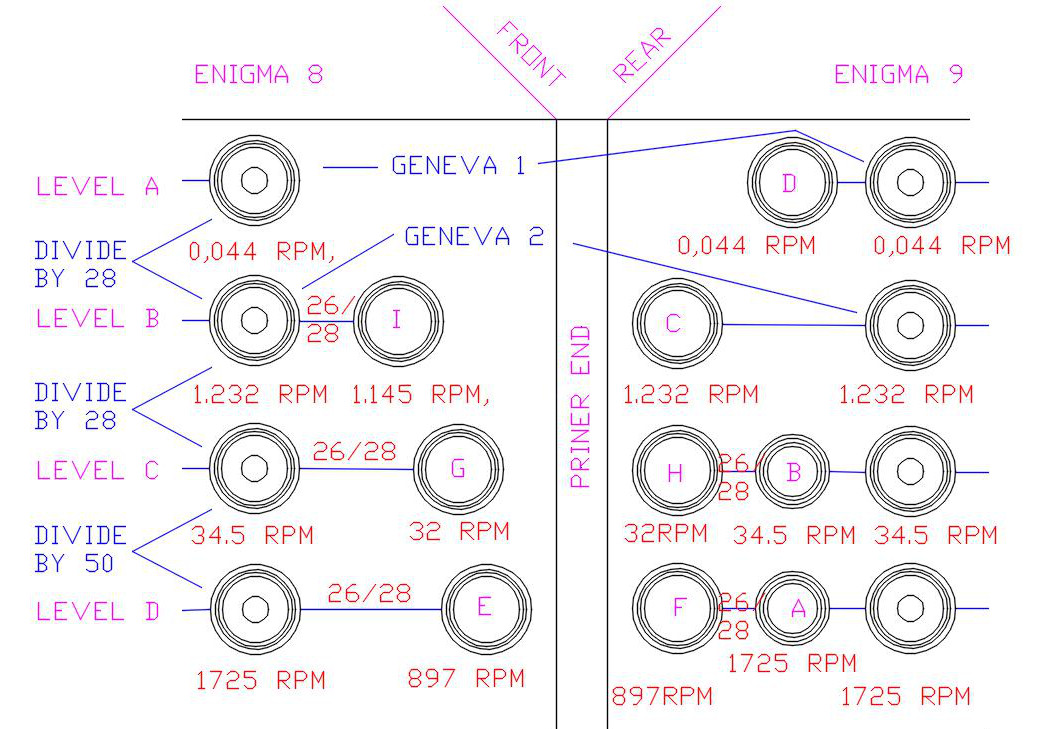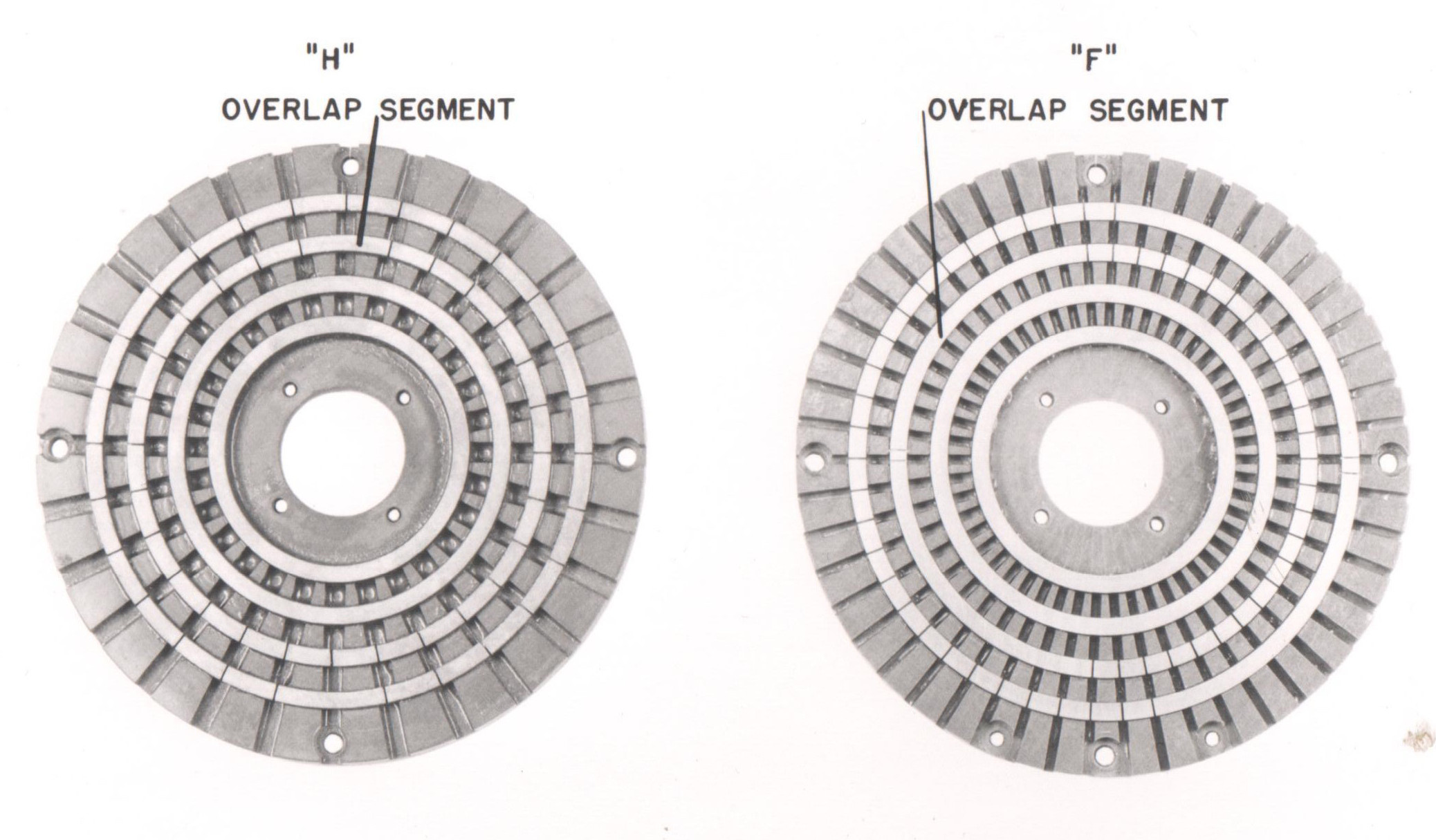The American Naval Bombe N-530
Positioning Commutators
When the machine recognises a stop condition, it starts to slow down until the zero rotation motor indicates no more movement. Then, in reverse, it runs back slowly to the previously recorded stop position. To do this, the machine needs to record the stop position and later it has to return to this.
This is achieved by setting a 26 thyratron on both the fast level D at 879 rpm and at level, C at 32 rpm. These timing commutators are at the rear of the machine; H at the C level and F at the D level.
Above is a view of the segment details of each commutator
This section of the main circuit diagram shows the circuitry supporting the H and F commutators. A signal from the STOP circuitry fires the thyratrons that are connected to the segments under the brush at that time. Thyratrons are fired by a voltage appearing on their grids. This diagram only shows two sets of 5 thyratrons, in practice, there are 26 connected to each commutator.
When the machine is coming back slowly with the anodes connected to each segment, the anode voltage of the fired thyratrons that matches the segment, create a signal to stop the machine, this activates a mechanism that stops the rewind motor and drops a latch pawl that holds the machine against further movement
This is a close up of commutators H, and F on the left-hand side



